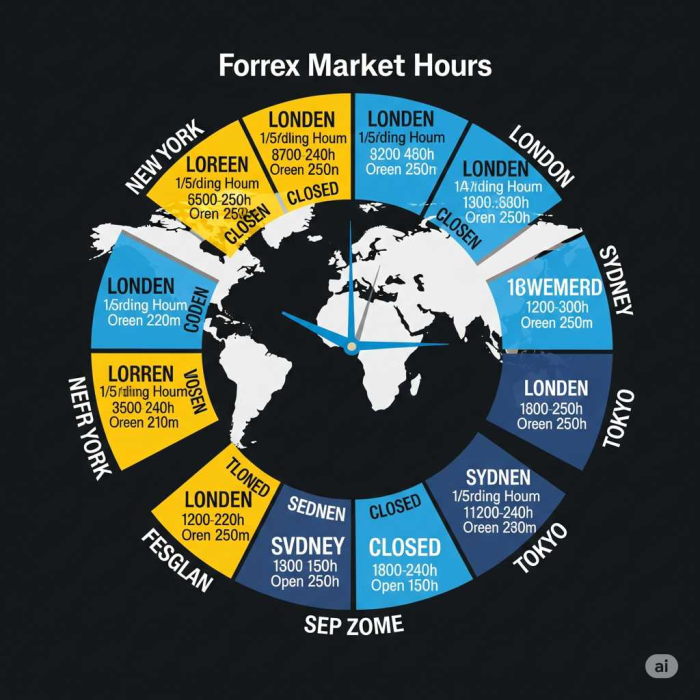Unlocking the 24/5 World of Forex Trading When Opportunity Never Sleeps (Almost!)
One of the most appealing aspects of the foreign exchange (forex) market, especially for those accustomed to traditional stock market hours, is its seemingly endless accessibility. Unlike stock exchanges with fixed opening and closing bells, the forex market operates 24 hours a day, five days a week. But what does that truly mean for traders, and how can you best leverage this round-the-clock opportunity?
Let's dive into the fascinating schedule of the global forex market.

The "Follow the Sun" Phenomenon: Why Forex Never Rests
The 24/5 nature of forex trading isn't a magical feat; it's a direct result of its decentralized nature and global reach. There isn't one single "forex exchange." Instead, it's a vast network of banks, financial institutions, and individual traders worldwide. As one major financial center winds down its trading day, another is just beginning, creating a continuous flow of activity.
This "follow the sun" model means that at any given moment during the weekdays, there's always a major financial hub actively trading currencies.
The Four Major Trading Sessions
While the market is technically always open during the week, trading activity, liquidity, and volatility tend to concentrate around four main sessions, each named after a key financial capital:
-
Sydney Session (Asian Early Bird / Oceania Focus): Kicking off the trading week, the Sydney session typically opens around 10:00 PM GMT (7:00 AM Sydney time) on Sunday and closes around 7:00 AM GMT (4:00 PM Sydney time). While generally quieter, it sets the tone for the Asian trading day and can see activity in AUD and NZD pairs.
-
Tokyo Session (Asian Powerhouse): The Tokyo session, a major liquidity provider for Asian currencies, opens shortly after Sydney, around 12:00 AM GMT (9:00 AM Tokyo time), and runs until approximately 9:00 AM GMT (6:00 PM Tokyo time). This session is particularly important for Yen-related currency pairs (e.g., USD/JPY, EUR/JPY).
-
London Session (European Market Engine): Arguably the most active and liquid session, the London market opens around 8:00 AM GMT (8:00 AM London time) and continues until approximately 5:00 PM GMT (5:00 PM London time). Due to its overlap with both Asian and North American sessions, it often experiences significant price movements and tighter spreads across a wide range of currency pairs.
-
New York Session (North American Powerhouse): The New York session begins around 1:00 PM GMT (8:00 AM New York time) and closes the week's trading around 10:00 PM GMT (5:00 PM New York time) on Friday. This session is especially important for USD-related pairs and often sees continued momentum from the overlapping London session.
Overlaps: Where the Action Is!
While each session offers trading opportunities, the periods where two major sessions overlap often present the highest liquidity and volatility. This is when the most traders are active, leading to increased volume and potentially more significant price swings.
The most notable overlaps include:
- London and New York (1:00 PM - 5:00 PM GMT): This four-hour window is often considered the busiest and most liquid time in the forex market, as two of the world's largest financial centers are simultaneously active.
- Sydney and Tokyo (12:00 AM - 7:00 AM GMT): While not as volatile as the London/New York overlap, this period still offers increased activity compared to when only one of these Asian sessions is open.
- London and Tokyo (8:00 AM - 9:00 AM GMT): This shorter overlap can also present opportunities, especially for cross-currency pairs involving JPY and European currencies.
When Does the Forex Market Close?
The forex market officially closes for retail traders on Friday at 10:00 PM GMT (5:00 PM New York time) and reopens on Sunday at 10:00 PM GMT (5:00 PM New York time). This weekend break is when major banks are closed, and there's no official interbank trading.
Important Considerations for Traders:
- Liquidity and Spreads: During quieter periods (like the gap between the New York close and Sydney open), liquidity tends to be lower, and spreads (the difference between the buy and sell price) can widen. This can make trading more challenging and potentially more expensive.
- Volatility: Higher liquidity often leads to higher volatility, which can be both a blessing and a curse. While it offers more opportunities for profit, it also carries increased risk.
- Economic Releases: Major economic data releases (e.g., interest rate decisions, employment reports, GDP figures) can significantly impact currency prices. These releases are often scheduled during specific session hours, particularly the London and New York sessions.
- Daylight Saving Time: Remember that market opening and closing times will shift twice a year as countries transition to and from daylight saving time. Always double-check your broker's specific trading hours and consider using a reliable forex market hours converter.
- Holidays: While the forex market is generally open on most public holidays, major bank holidays in key financial centers (like New Year's Day, Good Friday, Christmas Day) can significantly reduce liquidity and cause wider spreads. It's crucial to be aware of these dates in advance.
In conclusion, the 24/5 nature of the forex market offers unparalleled flexibility for traders around the globe. By understanding the major trading sessions, their overlaps, and the impact of liquidity and volatility, you can strategically plan your trading activity and maximize your potential in this dynamic market. Happy trading!
Popular Tags